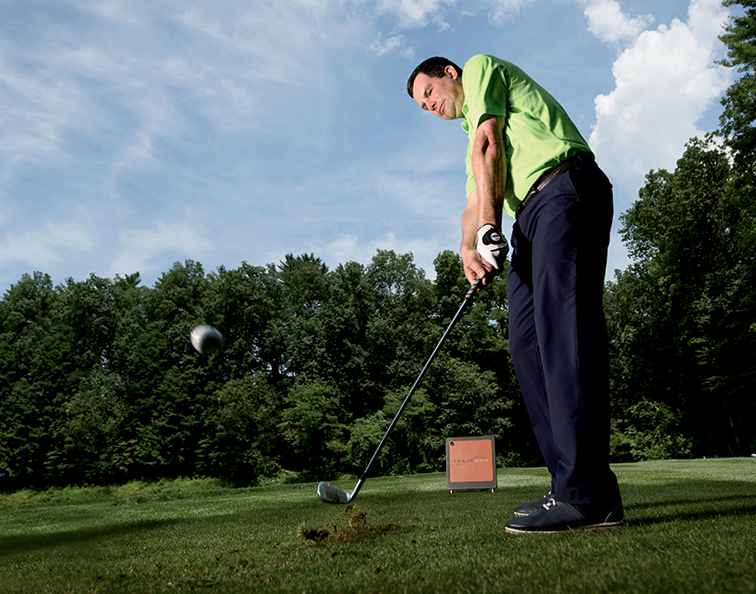One of the first things I hear from beginning golfers is that they didn’t get fit for clubs because they didn’t think they were good enough for it to matter. The truth is, a 20-handicapper gets more benefit out of a fitting than a scratch player does. Good players adjust quickly to the equipment they have in their hands, but high-handicappers end up fighting their clubs as much as they do their swings. Think of it as a cycle: improve your swing, tweak your clubs, repeat. Here, my wife, Debbie Doniger, who’s also a teaching pro, is helping me groove my swing with a new driver. Remember, there’s help for you out there!
1. Adjustability
Seek distance carefully
Adjustable drivers are cool – and with some help, you can get the clubhead set up correctly. But don’t overlook shaft length. A driver that’s two inches shorter than standard (43 instead of 45) might cost you a bit of speed, but you’ll end up adding distance because you’ll make better contact.
When you swing, extend your arms and make a full turn [top]. Most players pull the club to the inside, trying to create speed right away.
2. Shaft Fitting
Picking a shaft isn’t just about ‘R’ or ‘S’

When you swing a club with a shaft that feels good, you aren’t responding to the regular or stiff flex. You’re feeling the tip stiffness and torque. Those factors, along with shaft weight, give you the spin, distance, control and feel you want. So don’t fixate on the letter on the shaft band. And don’t buy off the rack: you wouldn’t buy a suit or dress without checking the fit, would you?
3. Maintenance
Get regular check-ups

It’s not hard to convince a golfer how important it is to get fit for clubs. But even if you’ve gotten fit recently, you still need to pay attention to your equipment specs. Why? Because if your swing improves, it could mean you need to tweak your clubs. And even if your swing stays the same, hitting balls off mats at a range can change the lie angle and loft of your irons enough that they won’t fit you by the end of a single season. It’s like changing the oil in your car. Preventative maintenance keeps things running smoothly.
4. Contact Tests
How to find the sweet spot

Impact tape is a cheap, easy way to get an instant read on how you’re swinging. It can show you how consistently you’re hitting the sweet spot on the face [above]. It also can indicate that you’re hitting it consistently – but in a place where you’re not getting the benefit of the club’s technology. If you see marks all over the face, it usually means you need help with your swing. If you see marks in the same spot but off centre, it could be time to adjust your equipment.
5. Wedge Fitting
Are your wedges working together?

Wedge practice is one of the fastest ways to bring down your handicap. In the photo above, Debbie’s helping me test different wedges by trying to land balls on a towel and seeing how they run out to the hole. You can play this game to improve your short-game skills – or to build the perfect gap between the wedges in your set. You want three wedges that produce different shot trajectories and distances.
This philosophy is more obvious for full-swing shots but also applies to these little chips and pitches. If two wedges do almost the same thing, you’re going to be short somewhere else in your bag. The purpose of getting fit is to optimise your equipment for your swing and physique but also to maximise the number of shots and situations you can handle.
– Kevin Sprecher, one of Golf Digest’s Best Teachers in New York, is based at Sleepy Hollow Country Club in Briarcliff Manor.




